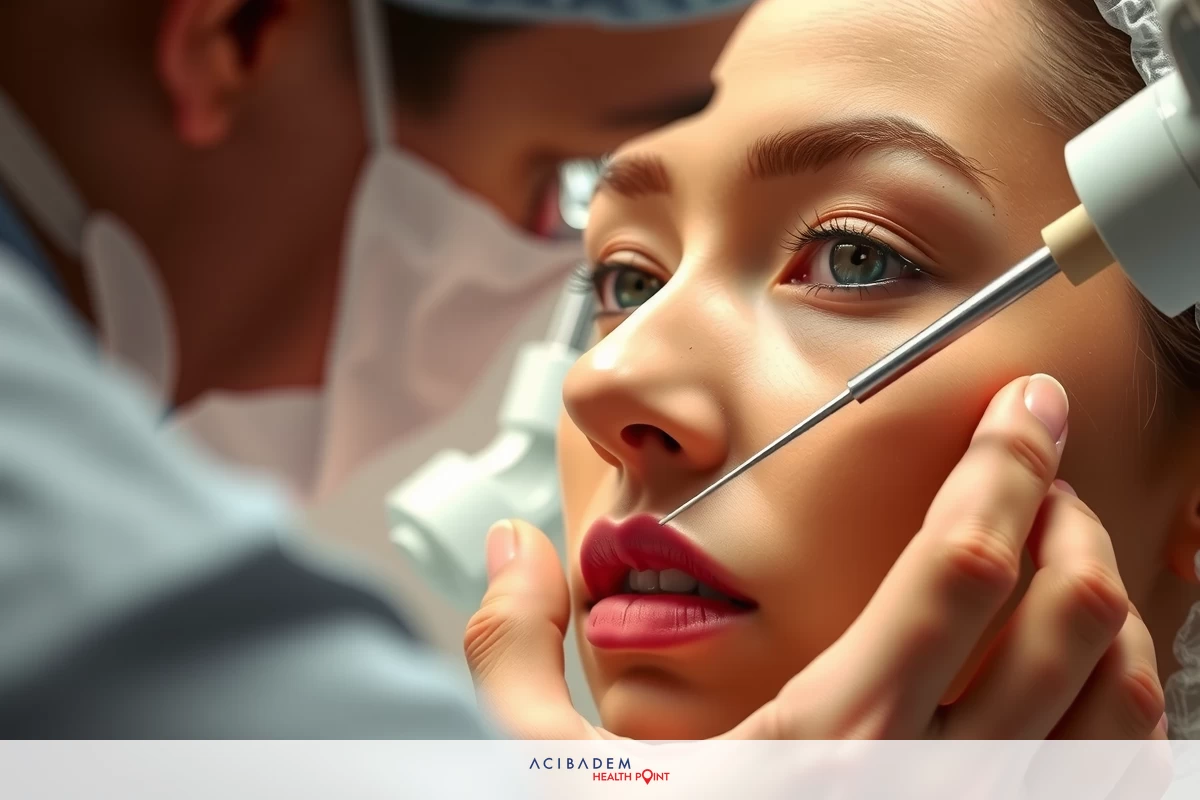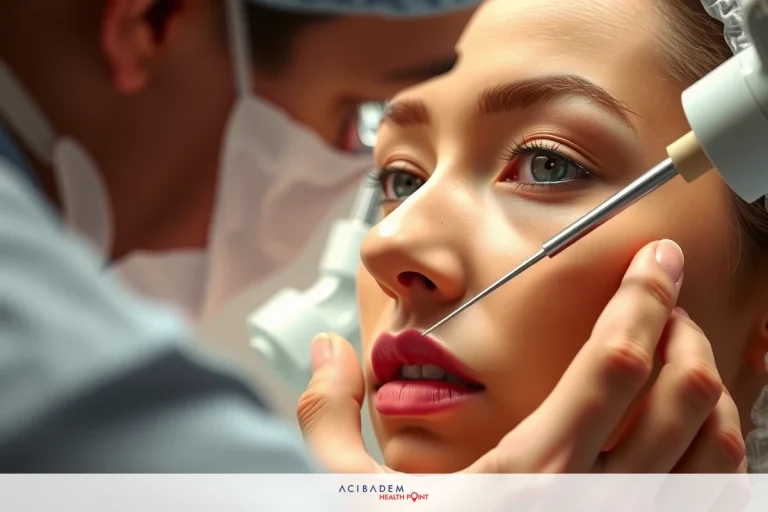What is Rhinoplasty Cosmetic Surgery?
What is Rhinoplasty Cosmetic Surgery? Rhinoplasty is a popular form of cosmetic surgery. This procedure is primarily performed to enhance the aesthetic appearance of the nose and achieve a more harmonious balance with other facial features. As such, it can greatly contribute to an individual’s self-confidence and overall satisfaction with their appearance.
The process of rhinoplasty involves reshaping the nose’s structure to better suit the patient’s desires and needs. Whether it is to modify the size, angle or contours of their nose, patients turn to this surgical solution for a variety of reasons. It’s important to note that while rhinoplasty can significantly enhance one’s visual appeal, it also has medical benefits such as improving breathing difficulties.
https://www.acibademhealthpoint.com/how-to-make-your-nose-look-shorter-a-guide-to-rhinoplasty/
Understanding Rhinoplasty
Rhinoplasty is a type of cosmetic surgery that primarily focuses on the nose. Often referred to as a ‘nose job’, this surgical procedure can greatly enhance the aesthetic appeal of an individual’s face by altering the size, shape, or proportions of their nose. The goal is not only to improve the nose’s appearance but also to ensure it complements other facial features for a more harmonious look.
This cosmetic procedure can be performed for various reasons. Some individuals choose rhinoplasty to address perceived flaws or irregularities in their nose, such as bumps on the bridge, asymmetry, or an undesirable shape. Others might undergo the surgery to correct issues related to their nasal tip or nostrils. Rhinoplasty can modify these features by reducing their size, reshaping them, or making them more symmetrical.
However, it’s crucial to note that rhinoplasty is not solely about aesthetics. While it’s commonly known as a ‘nose job’, this term undersells the medical benefits of the procedure. For instance, rhinoplasty can be used to rectify structural defects in the nose that cause breathing problems. It can also repair damage caused by injuries or help patients with congenital disabilities like a cleft palate. Thus, while rhinoplasty is indeed a form of cosmetic surgery, its benefits extend beyond merely enhancing one’s appearance.
Aesthetic Enhancement and Facial Harmony
Rhinoplasty, as a form of aesthetic enhancement, holds the potential to significantly improve an individual’s self-perception and confidence. By altering the proportions of the nose in a way that better suits a person’s face, it can lead to a significant enhancement in their overall look. This sense of facial harmony, achieved by ensuring all features are proportionate and well-balanced, is a key goal of any rhinoplasty procedure.
The concept of facial harmony is central to the field of cosmetic surgery. It refers to the balance and proportion of facial features – how well each part complements the others. Rhinoplasty can play a pivotal role in achieving this balance. For example, reshaping a nose that is too large or too small for the face can create a more balanced appearance. Similarly, adjusting the angle or position of the nose can ensure it aligns better with other facial structures like the forehead and chin.

However, it important to note that ‘harmony’ does not equate to ‘symmetry’. While our faces are generally symmetrical, perfect symmetry is neither achievable nor desirable because it can look unnatural. Instead, rhinoplasty aims for balance and proportion. A skilled surgeon will consider the unique contours and features of each patient’s face when planning a rhinoplasty procedure. The objective is not to create a ‘perfect’ nose but rather a nose that perfectly fits the patient’s face, enhancing their natural beauty while maintaining their individuality.
Frequently Asked Questions
Is rhinoplasty a painful procedure?
The level of pain experienced during and after rhinoplasty can vary from person to person. However, it is common for patients to experience some discomfort, swelling, and bruising in the days following the surgery. Your surgeon will prescribe appropriate pain medications to help manage any discomfort during the recovery period.
How long does it take to recover from rhinoplasty?
The recovery time after rhinoplasty can vary depending on the individual and the extent of the surgery. Generally, it takes about one to two weeks for most of the swelling and bruising to subside. However, complete healing and final results may take several months as the nose settles into its new shape.
Will there be visible scars after rhinoplasty?
In most cases, the incisions made during rhinoplasty are placed inside the nose or in inconspicuous areas, such as along the natural creases of the nostrils. This helps minimize visible scarring. However, it's important to follow your surgeon's post-operative care instructions to ensure proper healing and reduce the risk of scarring.
Can rhinoplasty fix breathing problems?
Yes, rhinoplasty can address structural issues that contribute to breathing difficulties. Procedures like septoplasty or turbinate reduction can be performed alongside cosmetic changes to improve nasal function. It's essential to communicate any breathing concerns with your surgeon during the consultation so that they can develop a comprehensive treatment plan.
Will insurance cover the cost of rhinoplasty?
Insurance coverage for rhinoplasty varies depending on your specific insurance plan and the reasons for undergoing the procedure. While purely cosmetic procedures are typically not covered, if there is a documented medical necessity, such as addressing breathing difficulties or repairing damage from an injury, it may be possible to obtain coverage. It's best to consult with your insurance provider to understand your policy's coverage criteria and requirements.











